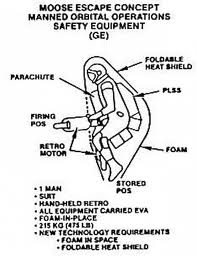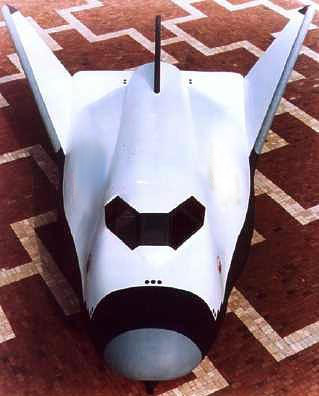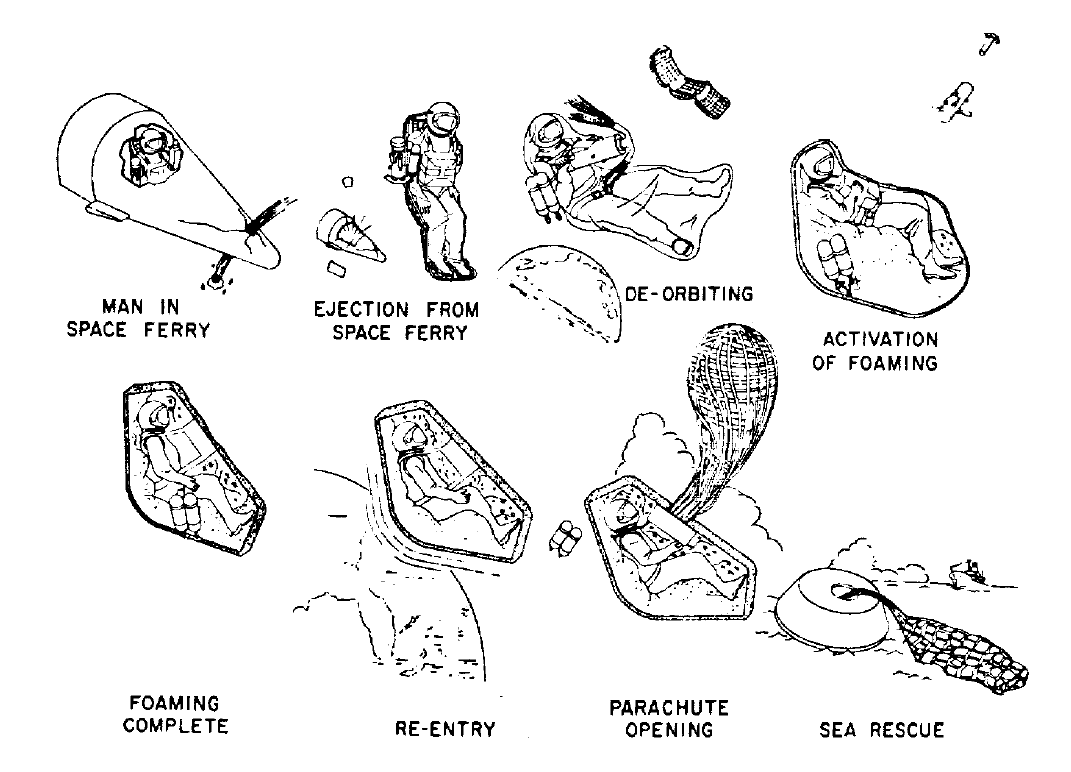by Tom Verreault
Surprisingly, with the democratization of space flight in the Frontier such that anyone and everyone can visit space, the development of safety equipment had not kept pace with the volume of people engaging in space flight. The recent UPFS Titan disaster illustrated the folly of this when the ship lacked enough life pods and life boats to evacuate the entire passenger and crew compliment following its tragic collision with fragments of a comet in the White Light system.
| Moose 2 deployment |
An up and coming company, Nascom Automated Systems for Aerospace, has branched from their niche market in automated air cars and super-sonic transports into space survival equipment in direct response to the aftermath of the Titan tragedy. This year they have unveiled two new safety systems for evacuating crew and passengers from orbit, the MOOSE 2 and the DOLEV.
The MOOSE 2
MOOSE 2 is a 90 kg suitcase that contains a folded heat shield, inflating high impact polyfoam, a radio beacon and tracker, braking parachute, emergency water and rations, re-entry rockets, and a level 3 robotic processor programed to control the rockets and parachute deployment. In the event of an emergency in orbit over a planet, a vacuum suited being can go EVA from a vehicle or station with the MOOSE 2 in tow. It takes 30 minutes to deploy and activate its automated system. Getting out of orbit will take 7 to 17 minutes. The system can only be used while in orbit over a terrestrial body.
 |
The MOOSE 2 system is the automated re-entry feature. Nascom has mated a mid-level robotic processor to the re-entry rockets and parachute. If the system is provided with coordinates for a landing site it will land within 1 km of that spot with an 85% success rate. A normal failure will generally deliver the evacuee within 10-100 km of the designated spot and a complete failure (only 3% chance) could drop the evacuee anywhere on the planet.
Normally, all MOOSE 2 systems will be stored in the suit locker of a ship and can be plugged into the computer net allowing the astrogator to update them along with all life pods and life boats with coordinates for the landing spot any time. (The standard practice is to preselect a landing site but at the time an abandon ship order is given the astrogator can amend the coordinates.) This feature ensures that crew and passengers are not spread all over a planetary body without any hope of linking up afterward. MOOSE 2 relies on the navigation section of a ship or similar section of a space station to know where it starts from in orbit. Without updates from an astrogator or astrogation section the MOOSE 2 will not know where to deposit the evacuee and will deliver him or her anywhere on the planet.
 |
Spacesuit armor is contra-indicated for use with the MOOSE 2. Beings wearing spacesuit armor have experienced injury on landing. (STA check to avoid 2d10 points of damage.)
The emergency beacon is omni-directional with 1000 km range and comes with a beacon tracker which provides the user with the distance and direction to all other similar emergency beacons in the area. There is a 4 liter water pack, 1 week (GST) of emergency rations, a knife and a light weight nylon ruck sack for stowing the survival gear and parachute (the chute is intended to double as a shelter and a visual signal to aerial searchers.
Weight: 90 kg, Cost: 2,500 Credits
DOLEV, Drone Orbital Launch & Emergency Vehicle
 |
The DOLEV comes in two models the Mark IV and the Mark VIII. It’s designed to replace the standard ship’s launches used on vessels throughout the Frontier. The DOLEV Mk IV replaces the small launch (4 passenger capacity) and the DOLEV Mk. VIII replaces the large launch (8 passenger capacity). Each DOLEV can be operated in manual mode but it is also equipped with a level 5 robotic brain programed to fly the craft.
The craft is a lifting body design and can be flown/glided to any designated spot on a planetary body. It uses the same updates from an astrogator or astrogation section for emergency landing spots but new landing spots can be designated at any time before re-entry. It effectively functions as a launch in space for vessel to vessel or vessel to station transfer of personnel but doubles as a life boat in emergencies. It cannot return to space on its own power but requires mounting on a rocket or being carried as cargo on a shuttle. The selling points of the DOLEV design are the versatility and the expansion of a ships evacuation equipment.
Mark IV - Cost: 100,000 Credits
Mark VIII - Cost: 125,000 Credits


